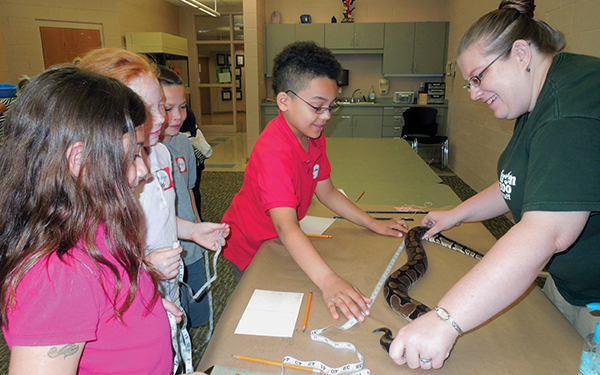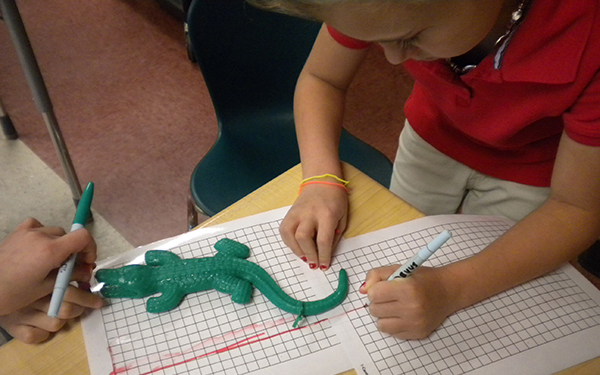Ritzman third-graders practice measuring skills at Akron Zoo

Math is a challenging subject for many students, particularly when it comes to abstract concepts like calculating the volume of an imaginary object. But what if students were to measure something more concrete – like an alligator?
That's exactly what one third-grade class at Ritzman Community Learning Center is doing with the "Are You Longer Than a Third Grader?" project. Their teacher, Kathy Devus, said she came up with the idea after seeing a social studies unit where students learned about the cost of transporting alligators of different sizes.
To turn it into a math lesson, Devus found polymer alligators that expand when submerged in water. Students then measure the alligators every day using graph paper and scales to chart how much they grow in length and weight.
Through the project, students learn the basics of the metric system, including how to measure objects in centimeters and grams. They also learn how to determine the volume, area and perimeter of boxes and calculate the dimensions of a container their alligator would fit in.
"It's much more fun than measuring your desk or a piece of paper," Devus said.
But that's not the end of the lesson. With the help of a grant from the Millennium Fund, her students will also get the chance to flex their measuring muscles on another kind of animal – the real kind.
An $875 grant will give students the opportunity to take a field trip to the Akron Zoo, where volunteers will help them measure live animals like snakes, lizards, bearded dragons and tortoises.
"The children get to be up close and personal with the animals," Devus said. "It's all about the experiences. By engaging students in real-world activities, they're more likely to understand the concept and remember how to use it in the future."

The field trip itself offers valuable lessons, too, including teamwork and following directions.
"There's so much that kids learn just from being outside the classroom," Devus said. "It's a shared experience with their classmates, and it's really heartwarming to watch."
The project is a hit among her students, both current and former. Veronica, a fourth-grade student who participated in the program last year, said she loves cold-blooded animals and was thrilled to see them in person.
"My favorite was the snake," she said. "It tried to move away when we measured it, but we finally did it."
Jackson, another of Devus' former students, concurred. "The animals were hard to measure because they could move," he said. "We had to use a crayon to mark how long they were on a huge piece of paper."
Devus said she enjoys seeing her students' reactions to the live animals, especially because, for some of them, this project is their first experience with the zoo.
"I had a student who lived right across the street from the zoo but had never been there because of the cost," she said.
Devus said she's thankful for the Millennium Fund grant because it exposes the children to a whole new world outside the classroom.
"For kids to see the correlations between what they learn at school and what they experience in real life – it's invaluable," she said.
